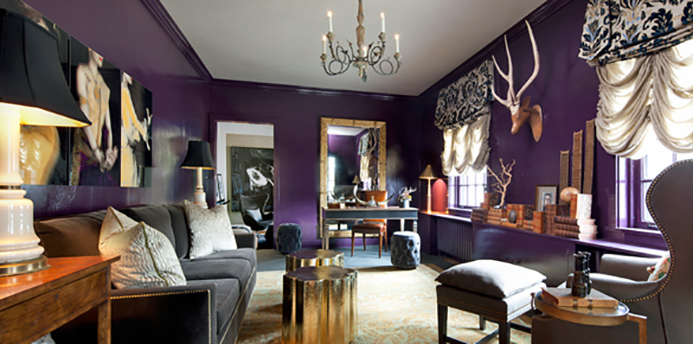Sticking to any single style can be predictable and boring.
But mastering a mix of finishes, metals, periods and styles can be a design challenge.
We turned to interior designer Jeannie Balsam, whose classic style with just the perfect touch of flair offers a model for mix mastery.
Before starting any design project, Balsam offers these tips:
- Always have a plan for your entire space before pulling the trigger on selections. That way, you won’t back yourself into a corner.
- Think of interior design like a Rubik’s Cube: one decision always affects another.
- Opt for balance—neither too feminine nor too masculine. An artful mix lets you appeal equally to both sexes.
- If you focus too much on a single period or style, you won’t have a lot of design options.
- Rooms need friction and energy to be visually interesting. Think of it as the one or two notes that finesse a composition. Don’t go overboard: there’s a delicate balance between friction and distraction.
- Sets or suites of matching furniture can make a room boring and predictable.

Mixing Styles
Forget “eclectic” or “transitional” as your mantra and think “timeless.” A fashionable woman knows how to mix vintage and contemporary clothing, just as a talented designer can finesse a mixed space that simply reads “beautiful.”
Balsam recommends keeping your traditional pieces classic not stuffy, and your modern selections clean without being too or period specific.
“With the majority of selections in either camp you are guaranteed that a special and unique piece will add the perfect amount of interest and energy to your space,” she says. “The trick is to not let your ‘stand-out’ piece be a distraction.”
Mixing Wood Finishes
Whether you want to use stained or painted, dark or blond wood, a polished or distressed finish, Balsam offers a few guidelines:
- A classic “true” brown stain is a good starting point for larger furniture pieces. If it’s tonally a true brown, it will read as a neutral in your space.
- Avoid wood tones with too much red or cherry, orange or gold.
- Put your woods together, and see how they react with each other. Opt for purity and intensity in your different finishes. For example, a piney yellow armoire would be jarring against a pure mahogany table, while a clean blond maple chair adds energy to an antique elm desk.
- Ivory- and ebony-stained finishes are a natural together.
- Layering is important. Pair a distressed finish with a polished one to add visual interest.

This dining room, decorated by Balsam, demonstrates the wisdom of avoiding the matching set by pairing cream crackle-finished chairs against a dark wood table. The coral stained sideboard plays off the coral fabrics used on the chairs.
Mixing Metals
Similar to mixing wood finishes, Balsam says to stay true to the element—in this case, metal. Refer to a metal’s natural patina. For example, a bronze doorknob weathers to reveal a brass base. Silver works well either polished or burnished, while chrome offers a pure brilliant shine. Brass can be stunning as long as it doesn’t look like it’s wearing a coat of clear nail polish.
Pairing a brushed chrome glass coffee table in front of a sofa flanked by burnished brass lamps adds visual interest (while shiny brass would be a distraction). Likewise, an antique silver mirror adds just enough patina and feminine energy to balance a natural steel console.

The energy in this room isn’t isolated to one element. The “true” browns of the lamp tables and chair legs pair with the ebony stained desk. Brass gets plenty of play and contrast with the polished stump tables to the burnished drinks table, bright brass nailhead trim and antique brass chandelier.
In the kitchen or bath, it’s a little more straightforward. Let your tile, stone, cabinet or furniture finishes determine if the silver or brass/gold tones work best.
Typically a more formal design will dictate polished vs. brushed finishes (for example, a traditional polished white marble bath calls for polished nickel, while a zen retreat in honed limestone leans toward brushed nickel or oil rubbed bronze). Add some spark with one or two lighting or accessory selections in a completely different, but well-edited, finish.
Top right photo: Balsam seamlessly introduced an aged, distressed commode into a more contemporary bedroom by keeping it within the same color palette and accessorizing it with the same light-handed touch as the rest of the room.

